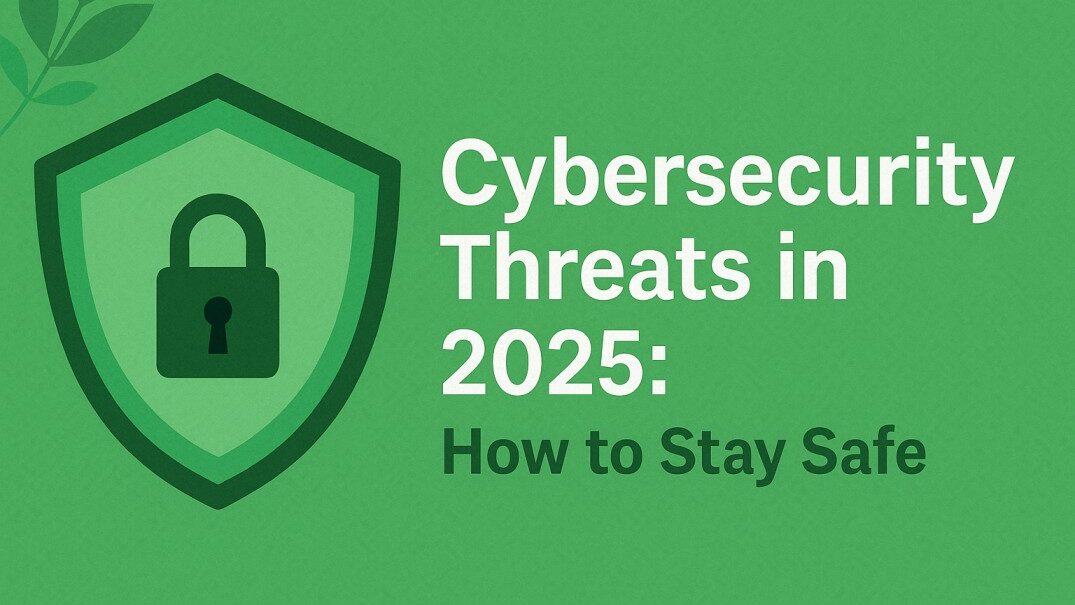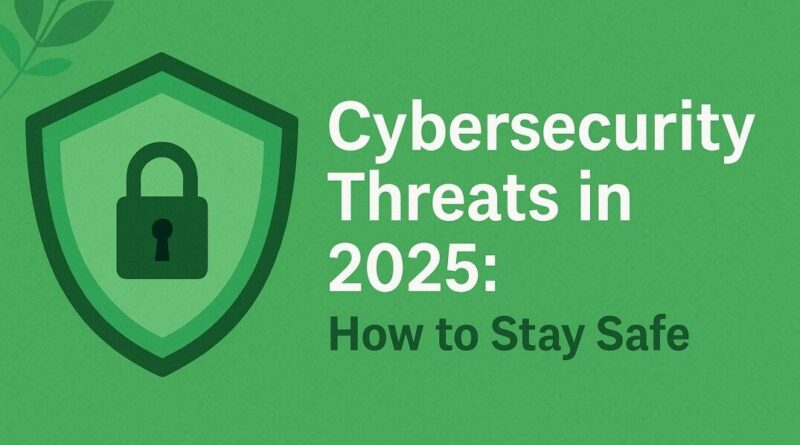Cybersecurity Threats in 2025: How to stay safe
Don’t Get Hacked in 2025: Your Guide to Staying Safe Online
Welcome to the digital world of 2025! We’re more connected than ever, with smart devices in our homes, cars, and even on our wrists. This incredible convenience has also created a new playground for cybercriminals. The cybersecurity landscape is changing fast, and the threats are becoming smarter, more targeted, and more dangerous.
This blog is your friendly, easy-to-read guide to the biggest cybersecurity threats of 2025 and, most importantly, how you can stay safe. We’ll break down the complex stuff into simple, actionable tips to protect your digital life, your family, and your business.
The Top Threats You Need to Watch Out For in 2025
Cybersecurity isn’t just about viruses anymore. The new threats are much more sophisticated. Here’s what’s trending in the world of cybercrime:
- AI-Powered Scams and Deepfakes: Artificial intelligence (AI) is a game-changer for hackers. They’re using it to create super-convincing phishing emails, text messages, and even “deepfake” videos and audio. Imagine getting a video call from your boss’s realistic-looking clone asking you to urgently wire money. It’s happening, and it’s getting harder to tell what’s real.
- Ransomware 3.0: Ransomware, where hackers lock your files and demand payment, is getting an upgrade. Now, they’re not just encrypting your data; they’re also stealing it and threatening to release it publicly. This “double extortion” is putting immense pressure on businesses and individuals to pay up.
- IoT Attacks: Your smart home devices—from your thermostat to your security cameras—are a new entry point for hackers. Many of these devices have weak security and can be easily exploited to gain access to your entire home network. It’s the “Internet of Threats” if you’re not careful.
- Supply Chain Attacks: This one is more for businesses, but it affects everyone. A supply chain attack is when a hacker targets a company’s trusted partner or vendor to get to the main target. Think of it like a thief using a delivery driver’s uniform to get into a secure building.
- Cloud Vulnerabilities: As more of our data moves to the cloud, the risks are shifting there too. Misconfigured cloud settings and insecure interfaces are creating major data breach opportunities for cybercriminals.
Your Ultimate 2025 Digital Safety Checklist
You don’t need to be a tech genius to protect yourself. By following these simple, proactive steps, you can build a powerful defense against most cyber threats.
- Be a Password Pro: Stop using “123456” or your pet’s name! Create long, complex passwords for every single account. The best way to do this is with a password manager—it’s a digital vault that remembers all your passwords for you, so you only have to remember one.
- Activate Multi-Factor Authentication (MFA): This is your best friend in cybersecurity. MFA requires a second form of verification (like a code sent to your phone or a fingerprint scan) in addition to your password. It’s a simple step that can block over 99% of automated cyberattacks. Turn it on for every account that offers it—email, banking, social media, and more.
- Update, Update, Update! Those annoying software update notifications are actually your shield. Software companies release updates to fix security holes that hackers love to exploit. Make sure your phone, computer, apps, and even your smart home devices are set to update automatically.
- Think Before You Click: Phishing is still a massive threat. Be incredibly skeptical of any email, text, or social media message that asks for personal information, has a sense of urgency, or looks even slightly suspicious. Never click on a link or download an attachment unless you are 100% sure it’s from a trusted source.
- Secure Your Home Network: Change the default name and password on your Wi-Fi router. Use a strong, unique password and make sure your network is using the latest security protocol (WPA3 is best, but WPA2 is also good). Avoid doing sensitive tasks like banking on public Wi-Fi without a VPN (Virtual Private Network), which encrypts your internet traffic.
- Back Up Your Data: This is your lifeline in the event of a ransomware attack or a device failure. Regularly back up your important files to an external hard drive or a secure cloud service. Follow the 3-2-1 rule: three copies of your data, on two different types of media, with one copy off-site.
A Final Thought
The key to cybersecurity in 2025 is a mindset of continuous vigilance. Cyber threats are always evolving, but so are the tools and strategies to fight them. By being aware of the risks and taking these simple, smart steps, you can navigate the digital world with confidence and peace of mind. Stay informed, stay safe, and protect what matters most online.




Great insights on the cybersecurity threats in 2025! With so many emerging cyber threats and evolving online security trends, staying informed is more important than ever. I really appreciate the data protection tips and digital security best practices shared here — these are essential for anyone who wants to stay safe online in the coming years. Looking forward to more posts about the future of cybersecurity and cyber attack prevention strategies!